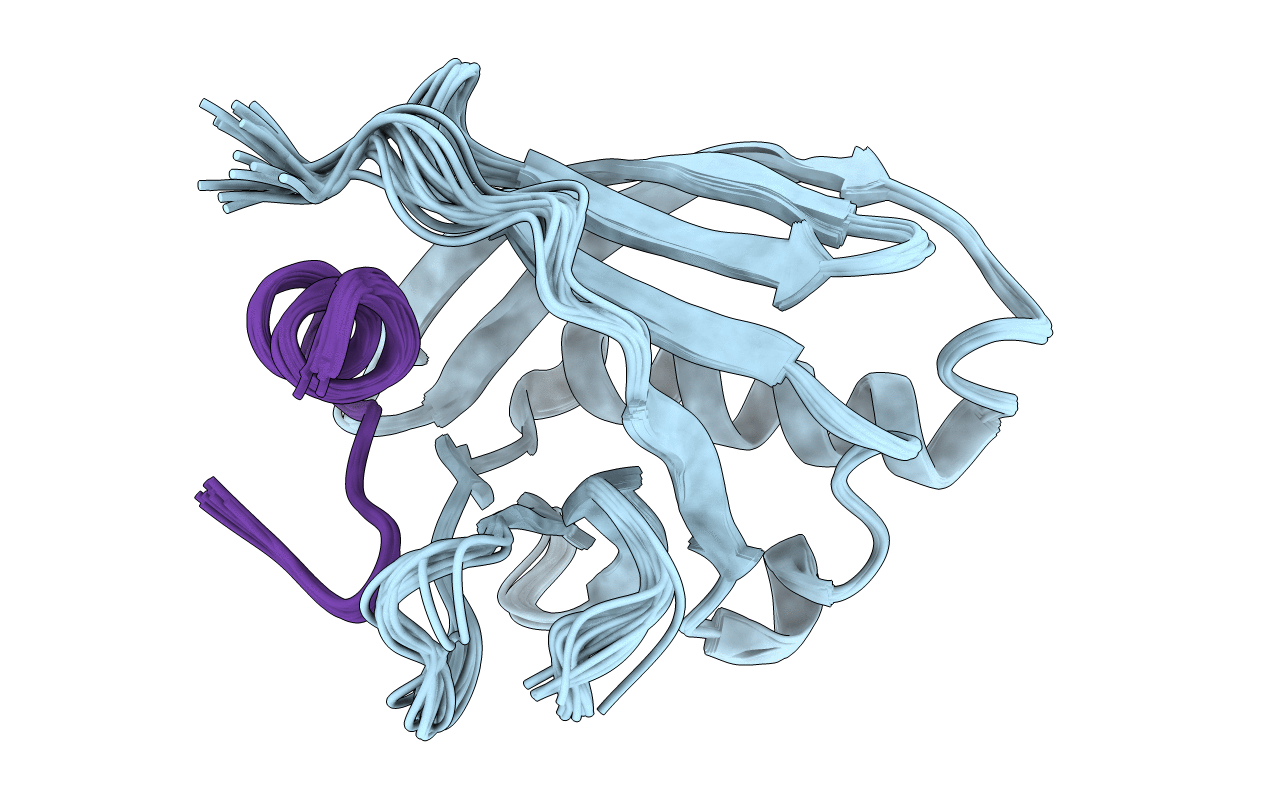
Deposition Date
2007-10-02
Release Date
2008-09-02
Last Version Date
2024-11-27
Entry Detail
PDB ID:
2JW1
Keywords:
Title:
Structural characterization of the type III pilotin-secretin interaction in Shigella flexneri by NMR spectroscopy
Biological Source:
Source Organism:
Shigella flexneri (Taxon ID: 623)
synthetic construct (Taxon ID: 32630)
synthetic construct (Taxon ID: 32630)
Host Organism:
Method Details:
Experimental Method:
Conformers Calculated:
200
Conformers Submitted:
15
Selection Criteria:
structures with the lowest energy


